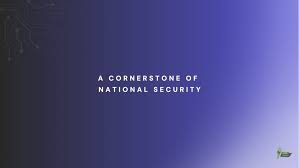In the modern world, where computers and the internet are central to our daily lives, cybersecurity has become more important than ever. Cybersecurity means protecting computer systems, networks, and data from cyber attacks. These attacks can come in many forms, such as stealing sensitive information, disrupting services, or even causing physical damage to devices connected to the internet.
As technology advances, so do the methods and sophistication of cyber attacks. Hackers, cybercriminals, and even nation-states are constantly finding new ways to exploit vulnerabilities in our digital infrastructure. This has led to an ongoing arms race between those who seek to protect our digital systems and those who seek to exploit them.
In response to these challenges, the concept of collective defense has emerged as a cornerstone strategy for the future of cybersecurity. To learn more about the strategic implementations and benefits of collective defense, consider reviewing case studies and expert analyses that highlight successful examples. Collective defense is based on the idea that cybersecurity is a shared responsibility that requires collaboration and cooperation among various stakeholders, including governments, businesses, and individuals.
Understanding Collective Defense
Collective defense goes beyond individual organizations or entities protecting their own systems. Instead, it involves pooling resources, sharing information, and coordinating responses to cyber threats on a broader scale. This approach recognizes that no single entity can defend against all cyber threats alone and that collaboration is essential to strengthening overall cybersecurity posture.
Key Elements of Collective Defense
- Information Sharing: Organizations and entities share threat intelligence, vulnerabilities, and best practices to better understand and mitigate cyber risks. This proactive sharing allows others to learn from incidents and prepare defenses accordingly.
- Collaborative Technologies: Utilizing technologies that enable automated threat detection and response across networks can significantly enhance the speed and effectiveness of cyber defenses. These technologies can detect anomalies and potential threats in real-time, allowing for immediate action to be taken.
- Public-Private Partnerships: Governments and private sector organizations work together to establish frameworks, regulations, and standards that promote cybersecurity practices. This collaboration ensures that cybersecurity measures are robust and aligned with evolving threats.
- Education and Awareness: Increasing awareness and educating users about cybersecurity best practices are critical components of collective defense. By empowering individuals to recognize and respond to potential threats, the overall security of digital systems can be improved.
Benefits of Collective Defense
- Improved Resilience: By leveraging collective resources and expertise, organizations can enhance their ability to prevent, detect, and respond to cyber threats effectively.
- Cost Efficiency: Shared resources and technologies reduce the financial burden on individual organizations, making cybersecurity more accessible and affordable.
- Scalability: Collective defense allows for scalability, enabling organizations of all sizes to benefit from shared cybersecurity measures and technologies.
- Adaptability: As cyber threats evolve, collective defense enables quick adaptation and response to emerging risks through shared intelligence and collaborative efforts.
Challenges and Considerations
While collective defense offers significant advantages, it also presents challenges that must be addressed:
- Trust and Collaboration: Building trust among stakeholders and fostering effective collaboration can be challenging, especially across different sectors and jurisdictions.
- Privacy Concerns: Sharing sensitive information for cybersecurity purposes must be balanced with privacy considerations to ensure compliance with regulations and protect individual rights.
- Legal and Regulatory Frameworks: Developing consistent legal and regulatory frameworks that support collective defense efforts across borders is essential for effective implementation.
The Role of Technology and Innovation
Technology continues to play a crucial role in advancing cybersecurity capabilities. Innovations such as artificial intelligence (AI), machine learning, and blockchain are being increasingly utilized to enhance threat detection, automate responses, and secure digital transactions. These technologies not only strengthen collective defense strategies but also enable organizations to stay ahead of evolving cyber threats.
Looking Ahead: Future Trends in Cybersecurity
As we look to the future, several trends are expected to shape the landscape of cybersecurity:
- AI-Powered Cyber Attacks: As AI technology advances, cyber attackers may increasingly use AI to automate attacks and evade traditional security measures.
- IoT Security Challenges: The proliferation of Internet of Things (IoT) devices introduces new vulnerabilities and cybersecurity challenges that will require innovative solutions.
- Regulatory Evolution: Governments are likely to introduce new regulations and standards to address cybersecurity risks, further emphasizing the importance of collective defense and compliance.
Conclusion
In conclusion, cybersecurity is a dynamic and evolving field that requires collective efforts to effectively protect our digital infrastructure. Collective defense represents a strategic approach to cybersecurity that emphasizes collaboration, information sharing, and innovation. By embracing collective defense strategies, stakeholders can enhance their resilience against cyber threats and ensure a safer digital environment for all.
As technology continues to advance and cyber threats become more sophisticated, the importance of collective defense will only grow. By working together and leveraging shared resources, we can build a stronger and more secure future for cybersecurity.
